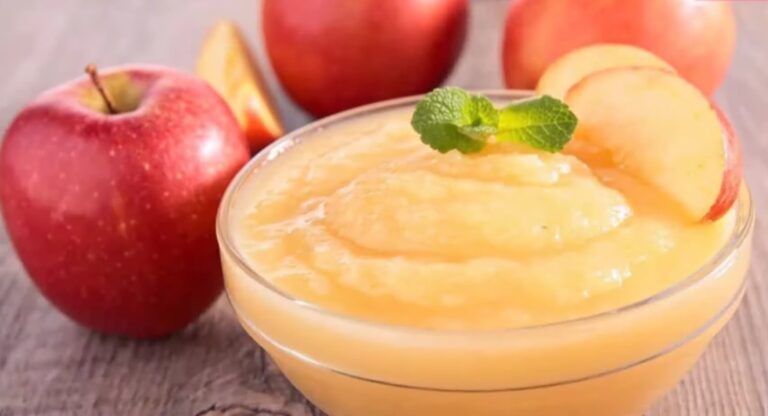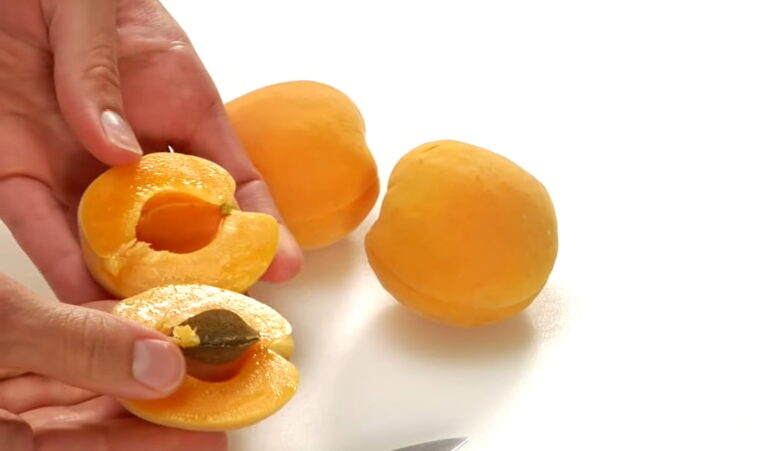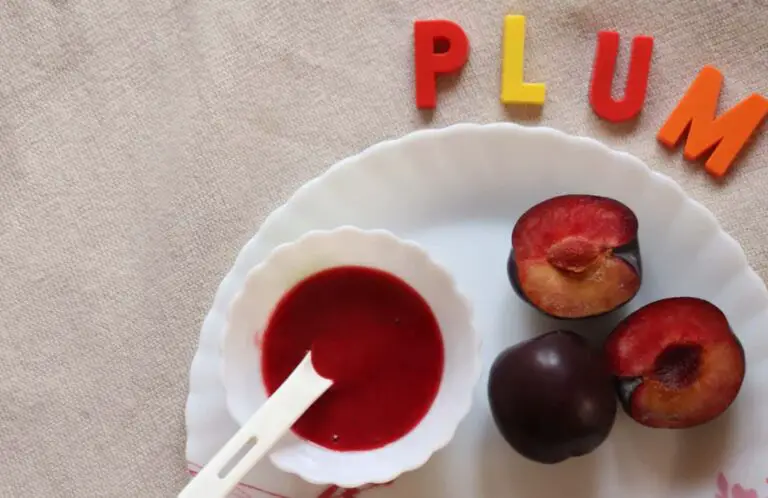How to make fruit puree for a 6 month old baby?
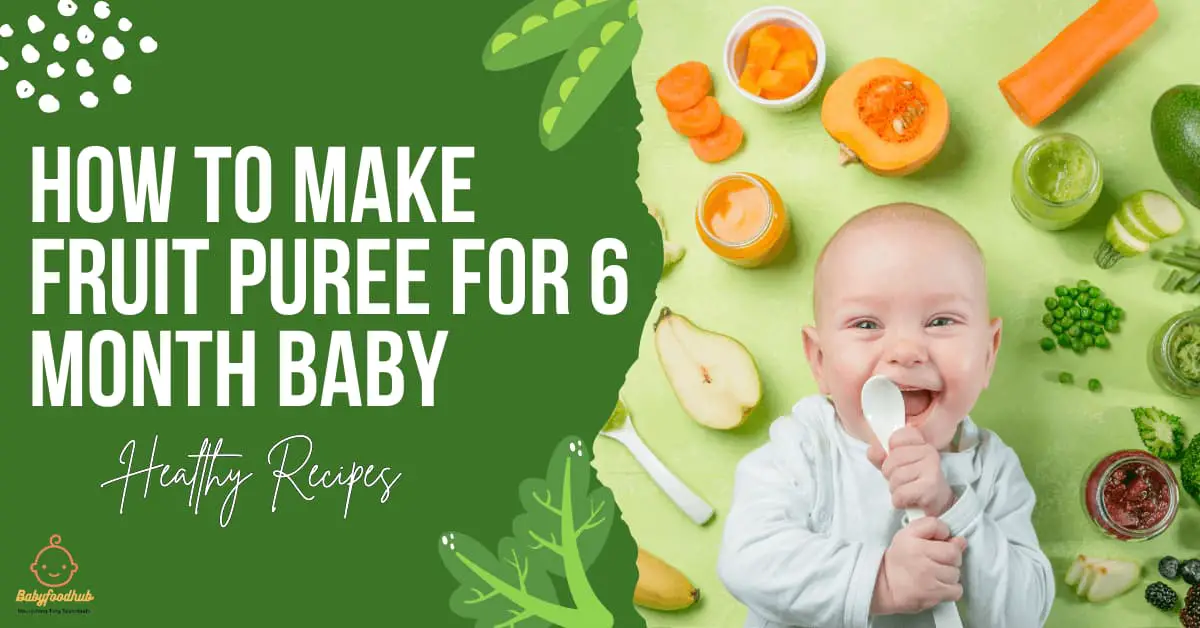
To make fruit puree for a 6 month old baby, simply select ripe, soft fruits, remove the peel and seeds, and blend or mash until smooth. Introduce one fruit at a time, starting with small quantities and gradually increasing as the baby’s tolerance to new foods develops.
A variety of fruits can be used, including bananas, apples, pears, peaches, and avocados. Experiment with different combinations and textures to provide a well-rounded introduction to solids. Remember to always consult with a pediatrician before introducing new foods to ensure they are appropriate for your baby’s development and any specific dietary needs or concerns they may have.
Why Introduce Fruit Puree To Your Baby’S Diet
Introducing fruit puree to your 6-month-old baby’s diet is a nutritious way to expand their taste buds. Learn how to make homemade fruit puree that is safe and healthy for your little one, providing essential vitamins and minerals for their growth and development.
Fruit puree is an excellent addition to your baby’s diet as it offers a wide range of nutritional benefits and introduces them to new flavours and textures. Including fruit puree in their meals can play a crucial role in their overall development and provide them with essential vitamins and minerals.
Let’s explore the reasons why fruit puree is a fantastic choice for your 6-month-old baby:
Nutritional Benefits Of Fruit Puree For A Baby’s Development
- Rich in vitamins: Fruits are loaded with essential vitamins like vitamin C, which strengthens the immune system, and vitamin A, vital for healthy vision.
- High in dietary fiber: Fruit puree contains dietary fiber that aids in digestion and helps prevent constipation in babies.
- Natural sweetness: Offering naturally sweet flavours, fruit puree serves as a healthy alternative to processed sugar and supports a baby’s developing taste preferences.
- Antioxidant properties: Fruits are packed with antioxidants that protect your little one’s cells from damage and promote overall health and well-being.
- Hydration: Many fruits have a high water content, helping keep your baby hydrated throughout the day.
Introducing different flavours and textures:
Adding fruit puree to your baby’s diet early on helps them become accustomed to a variety of flavours and textures. This early exposure can set the stage for accepting a wider range of foods in the future. By incorporating different fruits into their puree, you can expose your baby to a spectrum of tastes, stimulating their developing palate.
It is an exciting culinary journey for both you and your baby as they explore the world of fruits, from creamy bananas to tangy strawberries and everything in between.
Offering fruit puree to your 6-month-old baby presents numerous benefits. The nutritional profile of fruits contributes to their growth and development, while the introduction of diverse flavours and textures cultivates their taste preferences. Embrace the opportunity to provide your little ones with a nutritious and enjoyable eating experience, setting them up for a lifetime of healthy habits.
Choosing The Right Fruits For Your Baby’s Fruit Puree
Learn how to make nutritious fruit puree for your 6-month-old baby by choosing the right fruits. Discover the best fruits to include in your baby’s diet for optimal health and development.
Making fruit puree for your 6-month-old baby is an exciting milestone in their journey to solid foods. It’s essential to choose the right fruits that are not only flavorful but also packed with essential nutrients. Here are some points to consider when selecting fruits for your baby’s fruit puree:
Ideal fruits for babies at the age of 6 months:
- Apple puree: Rich in fiber and vitamins, apples make a nutritious choice for baby’s fruit purees. Opt for sweeter varieties like Gala or Fuji.
- Bananas puree: Easy to digest and loaded with potassium, bananas are a go-to fruit for many babies. They also add a creamy texture to purees.
- Pears puree: With their mild flavour and gentle texture, pears are a great option for introducing fruits to your baby. They are a good source of Vitamin C and fiber.
- Avocados puree: While technically not a fruit, avocados offer a smooth and creamy texture. They are packed with healthy fats essential for brain development.
- Blueberries puree: These antioxidant-rich berries can add a hint of sweetness to your baby’s fruit puree. Start with a small amount and ensure they are soft and well-mashed.
- Carrots puree: Carrots are a great first food for babies because they are sweet, nutritious, and easy to digest. They are a good source of beta-carotene, which is converted to vitamin A in the body. Vitamin A is important for vision, immunity, and skin health. Carrots also contain fiber, which can help prevent constipation.
Considerations for allergies and sensitivities:
- Introduce one fruit at a time and wait for a few days before introducing a new one. This way, you can identify any potential allergies or sensitivities.
- Watch out for common allergenic fruits like citrus fruits (oranges, lemons), strawberries, and kiwis. These can sometimes cause allergic reactions in babies.
- If your family has a history of food allergies, consult your pediatrician before introducing potentially allergenic fruits to your baby.
- If you suspect an allergic reaction, such as rash, vomiting, or diarrhea, discontinue the fruit and consult your pediatrician.
Remember, always choose fresh and ripe fruits while preparing purees for your little one. As they begin their solid food journey, discovering different flavors and textures will help develop their taste preferences and create a foundation for a lifetime of healthy eating habits.
Enjoy this exciting phase with your baby and explore the world of fruit purees together!
Preparing And Cooking The Fruits For Puree
Learn how to prepare and cook fruits for puree, perfect for your 6-month-old baby. Discover easy and nutritious recipes to introduce a variety of flavors to your little one’s diet.
To ensure the safety and nutritional value of fruit puree for your 6-month-old baby, proper preparation and cooking techniques are essential. Here are the steps to properly wash and prepare fruits, as well as cooking methods to retain the maximum nutrients:
Steps To Properly Wash And Prepare Fruits:
- Start by washing your hands thoroughly with soap and water.
- Select fresh, ripe fruits that are in season for optimal flavor and nutrient content.
- Rinse the fruits under cool running water to remove any dirt or debris.
- Use a vegetable brush to gently scrub the fruits with a natural fruit and vegetable wash.
- For fruits with thick skin, such as apples or pears, consider peeling them to remove any wax or pesticide residue.
- Remove any seeds, pits, or cores from the fruits as they can pose a choking hazard for your baby.
- Cut the fruits into small, manageable pieces to make them easier to cook and puree.
Cooking Methods To Retain Nutrients:
- Steaming: This cooking method preserves the nutrients in fruits while making them soft and easy to puree. Simply place the fruit pieces in a steamer basket and steam them until they are tender.
- Boiling: Boiling is another option for cooking fruits. However, be mindful of the fact that some nutrients may be lost in the water. To minimize nutrient loss, use minimal water and avoid overcooking the fruit.
- Baking: Baking fruits in the oven is a great way to enhance their natural sweetness. Place the fruit pieces on a baking sheet and bake them until they are soft and slightly caramelized.
- Microwaving: Microwaving is a quick and convenient cooking method for fruits. Place the fruit pieces in a microwave-safe dish with a small amount of water and microwave them until they are tender.
- Avoid frying or sautéing fruits, as these methods can add unnecessary fats and oils to your baby’s puree.
Remember to let the cooked fruits cool before pureeing them until smooth. You can use a blender, food processor, or immersion blender to achieve the desired texture for your baby’s fruit puree. As always, consult with your pediatrician before introducing new foods to your baby’s diet.
Blending And Storing Fruit Puree
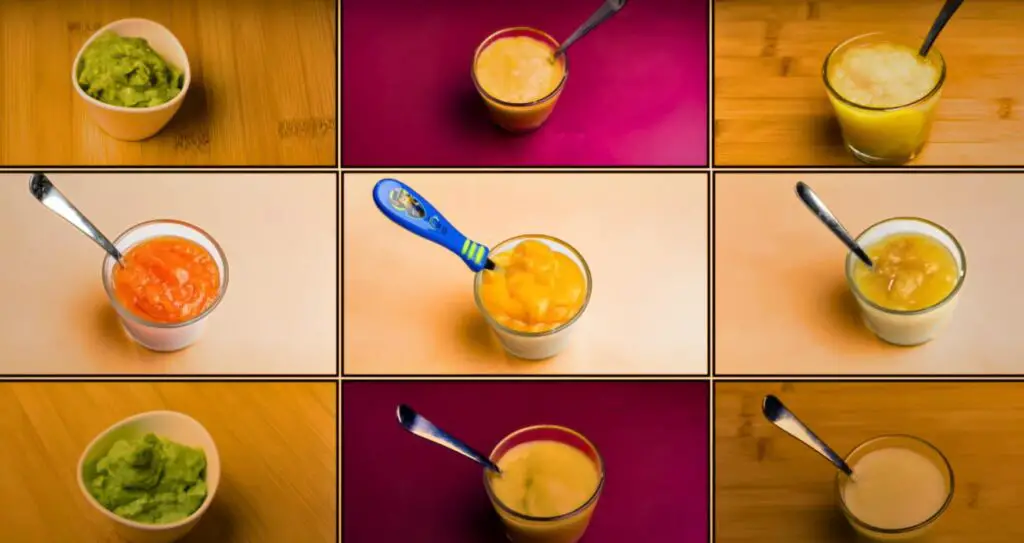
To make fruit puree for a 6-month-old baby, start by blending fresh fruits with a little water until smooth. Then, store the puree in small portions in airtight containers in the freezer for easy access and convenience.
Creating homemade fruit puree for your 6-month-old baby is not only a great way to introduce them to new flavors and textures but also ensures that they are getting the freshest and most nutritious food possible. Once you have chosen a variety of fruits and prepared them for pureeing, the next steps involve blending and storing the fruit puree.
Follow these tips for the right consistency and texture of puree and proper storage methods to maintain freshness and nutritional value.
Tips For The Right Consistency And Texture Of Puree:
- Choose ripe fruits: Opt for fresh, ripe fruits as they tend to be sweeter and softer, making it easier to achieve a smooth puree.
- Steam or bake the fruits: Steaming or baking fruits can help soften them further, making them easier to blend into a smooth consistency.
- Remove skins and seeds: Before blending, ensure that you remove any skins, seeds, or pits from the fruits to avoid any choking hazards.
- Start with small amounts of water: To achieve the desired consistency, begin by adding small amounts of water or breast milk/formula to the fruits while blending. Gradually increase the liquid as needed.
- Blend to a smooth texture: Blend the fruits until you achieve a smooth and lump-free texture. The puree should be easy to swallow for your little one.
Proper Storage Methods To Maintain Freshness And Nutritional Value:
- Use airtight containers: Transfer the fruit puree into clean, airtight containers to maintain its freshness and prevent any bacterial contamination.
- Label and date: Make sure to label each container with the type of fruit puree and the date it was made. This will help you keep track of its shelf life.
- Refrigerate promptly: Place the prepared fruit puree in the refrigerator within two hours of making it. This helps prevent the growth of harmful bacteria.
- Consume or freeze within a few days: Homemade fruit puree is best consumed within 1-2 days. If you plan to store it for a longer duration, consider freezing small portions in ice cube trays and then transferring them into freezer-safe bags or containers.
- Thawing frozen puree: When ready to use frozen fruit puree, thaw it in the refrigerator overnight, or you can also thaw it by placing the container in warm water.
By following these tips for the right consistency and texture of puree and proper storage methods, you can ensure that your 6-month-old baby enjoys the goodness of homemade fruit puree while maintaining optimal freshness and nutritional value.
Introducing Fruit Puree To Your Baby
Discover a simple way to introduce fruit puree to your 6-month-old baby. Learn how to make nutritious and homemade fruit puree that is perfect for your little one’s developing taste buds.
Introducing solid foods to your baby can be an exciting and important milestone in their growth and development. Fruit purees are a great choice for transitioning your 6-month-old to solids, as they are packed with essential nutrients and flavors that will expand their palate.
Here are some helpful tips and guidance to ensure a smooth and successful transition to fruit puree:
Guidance On Portion Sizes And Frequency Of Feeding
- Start with small portions: Begin by offering your baby 1-2 tablespoons of fruit puree at each feeding. As they become more comfortable with solids, gradually increase the portion size to about 4-6 tablespoons.
- Gradually increase frequency: Initially, introduce fruit puree once a day. As your baby grows and shows signs of readiness, you can gradually increase the frequency to two or three times a day.
- Pay attention to hunger cues: Babies have different appetites, so it’s important to watch for hunger cues such as showing interest in food, opening their mouths, or leaning forward. These cues will help you determine the appropriate portion size and feeding frequency.
- Offer variety: It’s important to offer a variety of fruits to ensure your baby gets a range of nutrients. Try introducing different fruits one at a time, observing any potential allergic reactions or digestive issues. Once your baby has tried a few different fruits, you can start combining them for added flavours and nutritional benefits.
Tips For A Smooth And Successful Transition To Fruit Puree
- Choose ripe fruits: Opt for ripe fruits as they are easier to puree and offer a smoother texture. Ripe fruits also tend to be sweeter, which can help entice your baby’s taste buds.
- Prepare homemade purees: Making your own fruit purees gives you control over the ingredients and ensures freshness and quality. Simply wash, peel, and remove any seeds or pits from the fruit before blending it into a smooth consistency.
- Start with single-ingredient purees: Begin with single-ingredient purees, such as mashed bananas or pureed apples, to introduce your baby to new flavours and textures. This allows you to identify and monitor any potential food allergies or sensitivities.
- Gradually introduce mixed fruit purees: Once your baby has tried and tolerated a variety of single-ingredient purees, you can start combining different fruits to create mixed purees. This introduces more complex flavours and nutrients to their diet.
- Use a soft spoon or silicone feeder: When feeding fruit puree to your baby, opt for a soft spoon or silicone feeder. These utensils are gentle on their gums and teeth and make it easier to control the amount of puree being consumed.
- Offer a variety of textures: As your baby becomes more comfortable with purees, gradually introduce slightly chunkier textures to promote oral motor skills development. You can achieve this by mashing the fruit with a fork instead of pureeing it completely.
- Be patient: It’s common for babies to take some time to adapt to new flavours and textures. Be patient and try offering the fruit puree in different ways, such as mixing it with breast milk or formula, or incorporating it into baby cereal.
With these tips and guidance, you can make the introduction of fruit puree an enjoyable and nutritious experience for your 6-month-old baby. Remember to always consult with your pediatrician before introducing new foods and to follow your baby’s individual developmental readiness cues.
Happy feeding!
Combining Fruit Puree With Other Foods
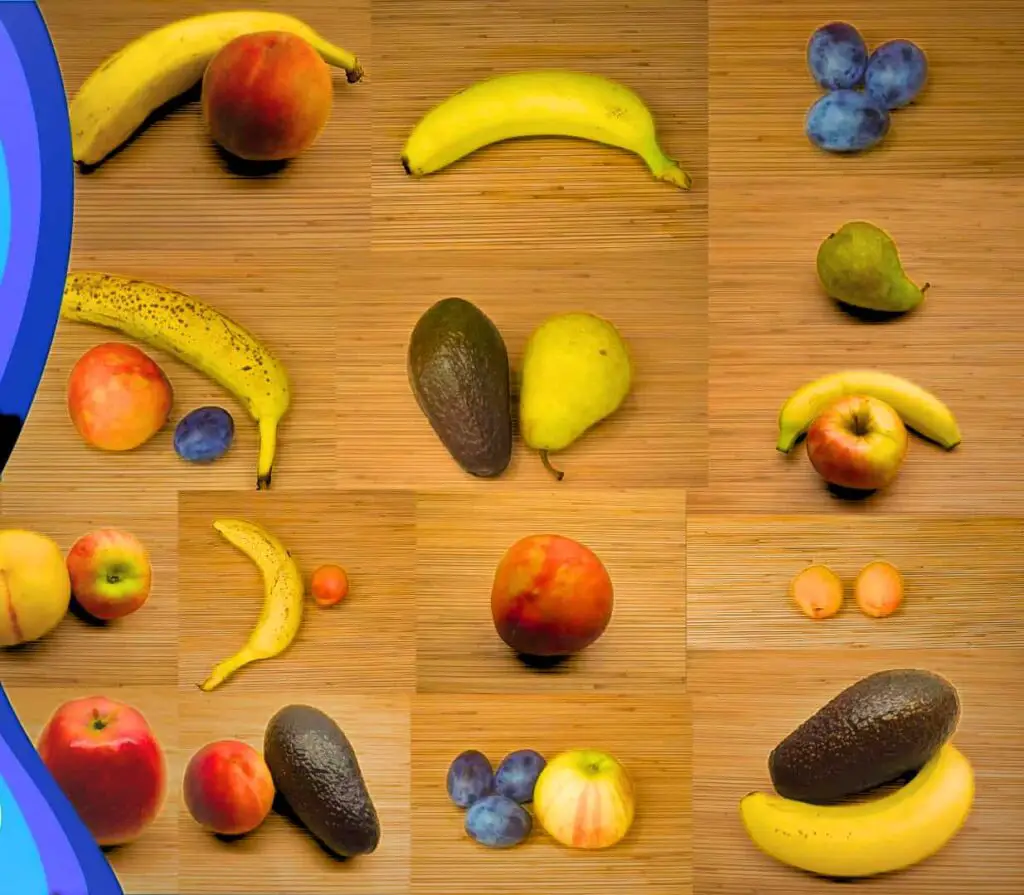
Learn how to make fruit puree for your six-month-old baby by combining it with other foods. This simple method ensures a nutritious and flavorful meal that will delight your little one. Experiment with different fruit combinations to create a variety of tastes and textures for your baby’s palate.
Marrying The Flavors Of Fruits And Other Solid Foods
Introducing solid foods to your 6-month-old baby, combining fruit puree with other foods can provide a variety of flavors and nutritional benefits. Here are some tips to help you create tasty and nutritious combinations:
- Pair complementary flavours: Mix different fruits that complement each other in taste and texture. For example, blending bananas with blueberries or apples with pears can create delicious combinations that your baby will love.
- Experiment with vegetables: Gradually introduce vegetables into your baby’s diet by combining them with fruit puree. This can help develop their taste for vegetables while still enjoying the familiar flavours of fruit. Try mixing pureed sweet potatoes with apples or carrots with peaches.
- Introduce grains: As your baby gets older, you can start introducing grains into their diet. Mix fruit puree with cooked and mashed grains such as oatmeal or quinoa. This adds extra texture and nutrients to their meals.
- Include yoghurt or cottage cheese: Adding a dollop of plain yoghurt or cottage cheese to fruit puree can provide additional protein and calcium. It also adds creaminess and a different taste sensation for your baby.
- Blend with breast milk or formula: If your baby is still breastfeeding or drinking formula, you can use it to thin out the fruit puree and make it easier to swallow. This also helps maintain the familiarity of the flavours they are used to.
- Add a pinch of spices: As your little one becomes more adventurous with flavours, you can introduce mild spices to their fruit puree. Cinnamon, nutmeg, or a hint of vanilla can add a subtle twist to their meals.
Remember, every baby is different, so take your time and observe their reactions to different combinations. Gradually introduce new ingredients, making sure to watch for any signs of allergies or digestive issues. With a bit of creativity and patience, you can create delicious and nutritious fruit puree combinations that your little ones will enjoy as they explore solid foods.
Safety Tips For Fruit Puree Preparation And Feeding
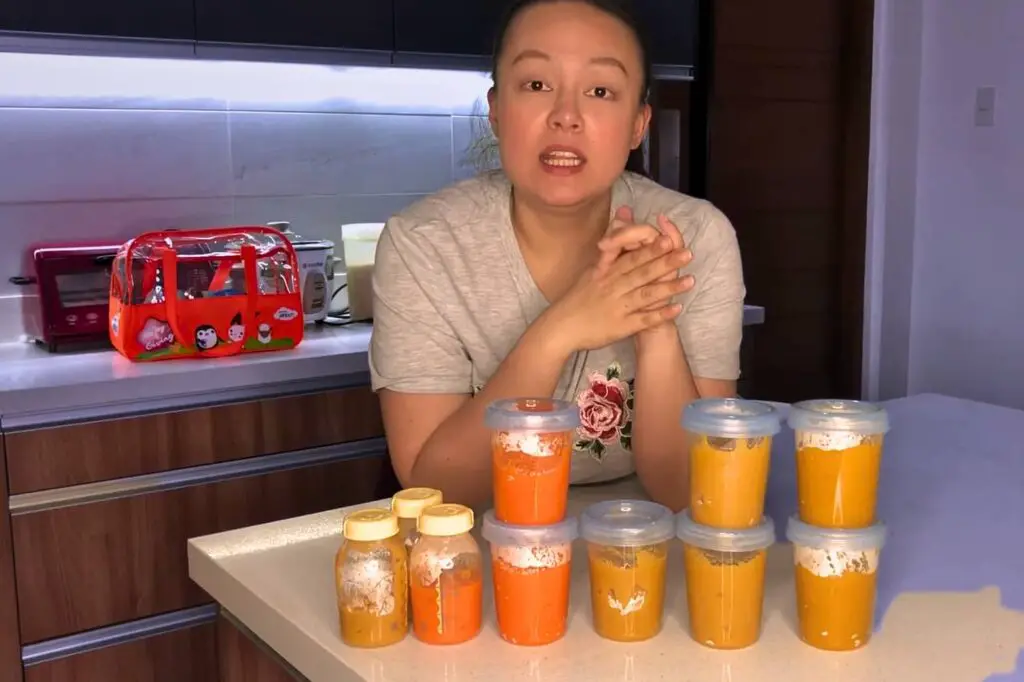
Discover essential safety tips for preparing and feeding fruit puree to your 6-month-old baby. Learn how to make nutritious and delicious homemade fruit purees while ensuring your baby’s safety during mealtime. Safeguard your little one’s health with these useful guidelines.
Preparing fruit puree for your 6-month-old baby is an exciting milestone in their journey of exploring new tastes and textures. However, it is crucial to prioritize your little one’s safety throughout the process. Here are some essential safety tips to keep in mind:
Avoiding Choking Hazards:
- Always choose age-appropriate fruits for pureeing. Soft fruits like bananas, peaches, and avocados are easier for babies to handle.
- Ensure that all fruits are properly peeled, pitted, and de-seeded to prevent any choking hazards.
- Cut the fruits into small, bite-sized pieces before pureeing to minimize the risk of choking.
- Avoid using fruits with small seeds, such as berries, until your baby is older and can handle them safely.
- Never serve your baby whole fruits or large chunks that may be difficult for them to manage.
Hygiene And Sanitization Practices:
- Before starting the preparation, make sure to wash your hands thoroughly with soap and warm water.
- Wash all fruits under running water to remove any dirt or contaminants.
- Use a clean cutting board and knife to cut the fruits, and avoid cross-contamination by washing them between different fruits.
- Sterilize your baby’s feeding utensils, bowls, blender, or food processor before use.
- Store any leftover fruit puree in airtight containers and refrigerate promptly. Discard any remaining puree after 2-3 days.
Remember, always supervise your baby closely while they are eating and never leave them unattended. Introduce new fruits one at a time to detect any potential allergies or reactions. By following these safety tips, you can ensure a safe and enjoyable fruit puree experience for your 6-month-old baby.
Troubleshooting Common Issues
Learn how to troubleshoot common issues when making fruit puree for your 6-month-old baby. Discover simple tips and techniques to ensure a smooth and nutritious puree every time.
Making fruit puree for a 6-month-old baby can sometimes be a challenging task. As your little one explores new tastes and textures, they may encounter some difficulties or even exhibit resistance towards certain foods. Additionally, it’s important to be aware of any potential allergic reactions that may occur.
In this section, we will address common issues that parents may face when making fruit puree for their 6-month-old babies and provide tips on how to troubleshoot them.
Addressing Feeding Difficulties And Resistance:
- Texture issues: Some babies may have difficulty transitioning from smooth purees to chunkier textures. To overcome this, gradually increase the texture of the fruit puree by mashing it with a fork instead of blending or introducing some soft fruit chunks for them to explore.
- Flavour preferences: Your baby may display resistance or dislike towards certain fruit flavours. Experiment with different combinations of fruits to find flavours that your baby enjoys. Mixing fruits with sweet flavours, such as banana or mango, can help mask less preferred flavours.
- Temperature sensitivity: If your baby prefers warm food, try gently warming the fruit puree before serving. Likewise, if your baby prefers cooler foods, refrigerate the puree for a short while before offering it to them.
Identifying And Managing Allergic Reactions:
- Observe for signs of allergies: It’s essential to keep an eye out for any signs of allergic reactions when introducing new fruits. Look for symptoms such as rashes, swelling, difficulty breathing, or vomiting. If you notice any of these signs, discontinue the fruit immediately and consult with your paediatrician.
- Introduce one fruit at a time: To better identify any potential allergens, introduce one new fruit at a time and wait for a few days before introducing another. This allows you to monitor your baby’s response and identify any specific fruits that may cause allergies.
- Consult with a healthcare professional: If your baby has a known history of allergies or if you suspect an allergic reaction to a fruit, it’s important to consult with a healthcare professional. They can provide personalized guidance and recommendations to ensure your baby’s safety.
Remember, every baby is different, and it’s normal for them to have preferences and difficulties when it comes to trying new foods. By addressing feeding difficulties and being vigilant about potential allergies, you can create a positive and nourishing feeding experience for your 6-month-old baby.
Monitoring And Evaluating Your Baby’s Reaction To Fruit Puree

Learn how to make fruit puree for your 6-month-old baby and monitor and evaluate their reaction to it. This guide will help you ensure their safety and enjoyment as they explore new tastes and textures.
Signs Of Allergies Or Digestive Issues To Watch For:
- Watch for any signs of allergies or digestive issues when introducing fruit puree to your 6-month-old baby.
- Look out for the following signs that may indicate a reaction to the fruit puree:
- Skin rash: If you notice redness, irritation, or a rash on your baby’s skin after consuming fruit puree, it could be a sign of an allergic reaction.
- Swelling: Swelling of the face, lips, tongue, or throat may indicate an allergic reaction and should be taken seriously.
- Difficulty breathing: If your baby experiences wheezing or difficulty breathing after ingesting fruit puree, seek immediate medical attention.
- Vomiting or diarrhoea: Excessive vomiting or diarrhoea after consuming fruit puree can be a sign of a digestive issue.
- Persistent fussiness or discomfort: If your baby seems consistently fussy or uncomfortable after eating fruit puree, it is essential to monitor for any underlying digestive issues.
Consulting A Healthcare Professional If Concerns Arise:
- If you observe any concerning signs or symptoms in your baby after introducing fruit puree, it is crucial to consult a healthcare professional. They can provide personalized advice and determine the best course of action. Keep the following in mind:
- Consultation with a paediatrician: Reach out to your paediatrician if you have any concerns about your baby’s reactions to fruit puree. They can evaluate the symptoms and provide appropriate guidance.
- Allergy testing: If you suspect an allergic reaction, your paediatrician may recommend allergy testing to identify specific allergens and develop an appropriate management plan.
- Gastroenterologist referral: In case of persistent digestive issues, your paediatrician might refer you to a gastroenterologist for further evaluation and specialized care.
Remember, your baby’s safety and well-being are paramount. Trust your instincts and seek professional advice if you have any concerns about your baby’s reaction to fruit puree.
Frequently Asked Questions For How To Make Fruit Puree For A 6 Month-Old Baby?
How Can I Make Fruit Puree For My 6-Month-Old Baby?
To make fruit puree for your 6-month-old baby, start by selecting ripe and soft fruits such as bananas, peaches, or pears. Wash the fruit thoroughly, peel, and remove any seeds or pits. Chop the fruit into small pieces and steam or cook until soft.
Blend or mash the fruit until it reaches a smooth consistency. Allow it to cool before serving to your baby.
What Fruits Are Best For Making Puree For A 6 Month Old?
The best fruits for making puree for a 6-month-old baby are bananas, avocados, pears, apples, and peaches. These fruits are soft, easy to digest, and packed with essential nutrients for your baby’s growth and development. Remember to always select ripe and fresh fruits for the best flavour and nutritional value.
Do I Need To Cook The Fruits Before Making Puree?
Yes, it is recommended to cook the fruits before making puree for your 6-month-old baby. Cooking the fruits softens them, making them easier to blend or mash into a smooth consistency. It also helps to break down any enzymes or fibrous components that may be harder for your baby to digest.
Steaming or boiling are common cooking methods for fruits.
Conclusion
Making fruit puree for a 6-month-old baby is a straightforward and beneficial step in their introduction to solid foods. By following the steps outlined in this blog post, you can ensure that your baby receives the essential nutrients and flavours from fresh fruits in a safe and easily digestible form.
Remember to choose ripe and organic fruits, wash them thoroughly, and remove any seeds or pits before blending them into a smooth consistency. It is important to introduce one fruit at a time and observe your baby’s reaction to ensure there are no allergies or sensitivities.
Offering a variety of fruits will help expose your little one to different flavours and textures, promoting healthy eating habits from an early age. With some patience and experimentation, you can prepare delicious and nutritious fruit purees that your baby will love.




